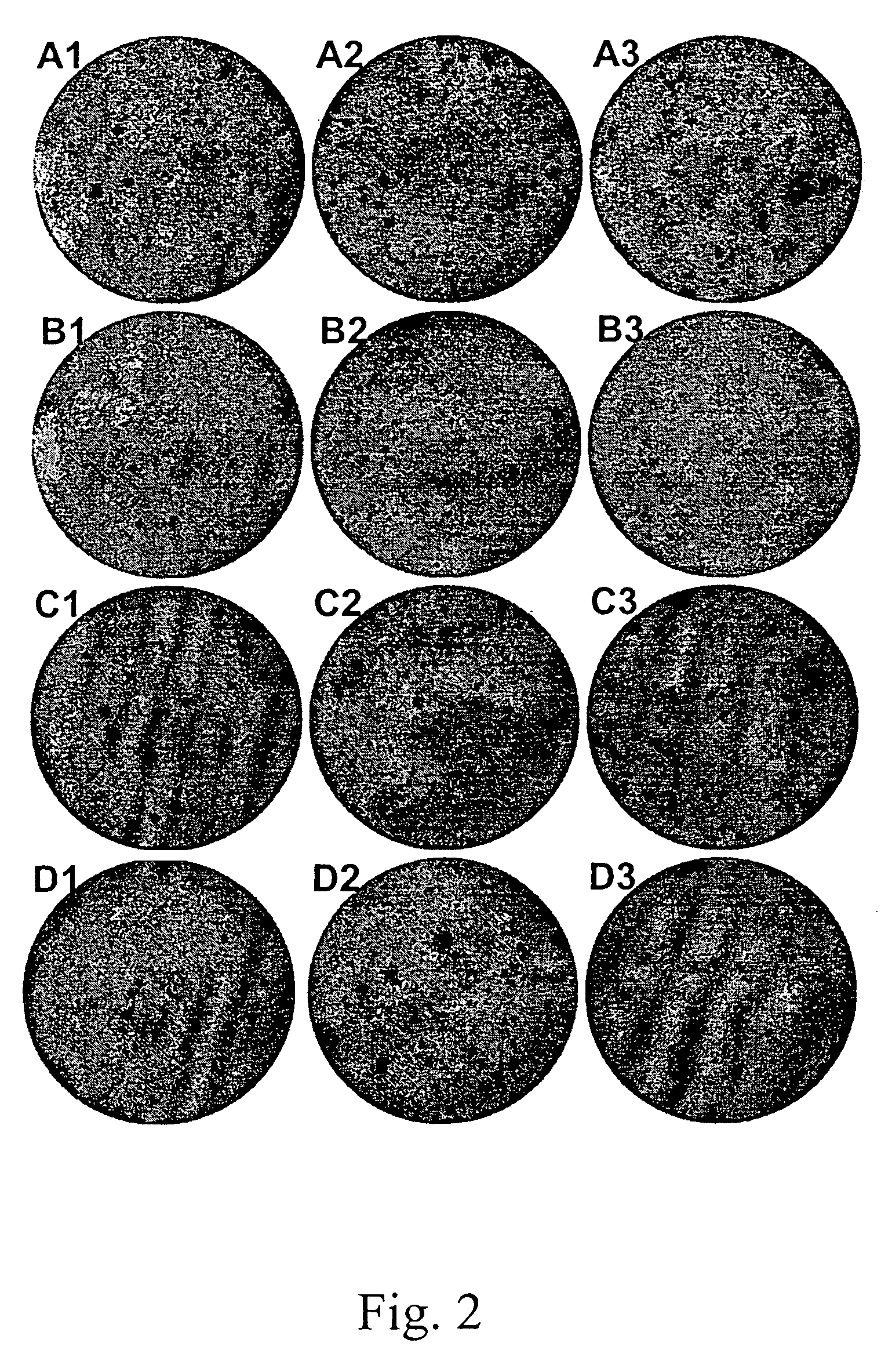Super-antigen fusion proteins and the use thereof
a technology of superantigens and fusion proteins, applied in the field of superantigen fusion proteins, can solve the problems of limiting investigation and inflammatory response, and achieve the effects of reducing preventing binding of sars virus, and reducing the excessive immunological response and allergic reaction
- Summary
- Abstract
- Description
- Claims
- Application Information
AI Technical Summary
Benefits of technology
Problems solved by technology
Method used
Image
Examples
embodiment 1
Synthesis of Peptide Encoding a Partial SARS E2 Spike Protein
[0025]SARS E2 spike protein sequence (accession number: NP—828851, SEQ ID No. 9) is found in the National Center for Biotechnology Information (NCBI). Position 680 to 1050 of the amino acid sequence (SEQ ID No. 9) is divided into four fragments (SA (SEQ ID NO:1), SB, (SEQ ID NO:2) SC(SEQ ID NO:3), and SD (SEQ ID NO:4)) for nucleic acid modification, and fragment synthesis and amplification, resulting target amino acid sequences ex vivo.
[0026]The present invention employs a method disclosed in TW 92126644, and expresses heterogenous virus spike protein in an E. Coli expression system. The importance of the modification is to alter a single nucleotide without effecting the original amino acid expression, and further to express specific proteins well in an E. Coli host system.
[0027]The commercial E. Coli plasmid pET230 is used as a template for amplifying nucleic acid fragments with polymerase chain reaction (PCR). In the pre...
embodiment 2
Plasmid Construction
[0031]Four nucleotides SA (SEQ ID NO:5), SB (SEQ ID NO:6), SC(SEQ ID NO:7), and SD (SEQ ID NO:8) from PCR, and plasmid pET-PE which contains binding domain and translocating domain of Pseudomonas exotoxin A (see Liao C. W. et al., Applied Microbiol Biotechnol 143:498-507, 1995), are ligated together in the restriction enzyme site respectively. Four constructed fusion plasmids are obtained and named pET-PE-SA, pET-PE-SB, pET-PE-SC, and pET-PE-SD (FIG. 1).
embodiment 3
Protein Expression and Purification
[0032]According to the method from Sambrook (Sambrook et al., J. Neuroimmunol. 1991; 32(1):35-41), the four plasmids, pET-PE-SA, pET-PE-SB, pET-PE-SC, and pET-PE-SD, were expressed to obtain fusion proteins by using IPTG induction method.
[0033]The E. Coli strain for protein (peptide) expression was BL21 (DE3) pLysS. First, the picked colony was inoculated into 100 ml of LB medium containing 200 μg / ml of ampicillin until OD550 reached approximate 0.3. Second, 1 mM IPTG (isopropylthio-β-D-galactoside, Promege, USA) was added into the medium, the incubation was carried on for 90 min, and cells were centrifuged and collected. The membranes of the cells carrying the target protein were loosen by freezing and thawing repeatedly, and then 10 ml lysis buffer (which contains 0.9 mg / ml lysozyme, 1 ml PMSF and 0.064 mg / ml DNaseI) was added for 10 min treatment at room temperature. Then, 1 ml 10% TRITON® X-100 was added for another 10 min treatment at room tem...
PUM
| Property | Measurement | Unit |
|---|---|---|
| nucleic acid | aaaaa | aaaaa |
| antibody titer | aaaaa | aaaaa |
| width | aaaaa | aaaaa |
Abstract
Description
Claims
Application Information
 Login to View More
Login to View More - R&D
- Intellectual Property
- Life Sciences
- Materials
- Tech Scout
- Unparalleled Data Quality
- Higher Quality Content
- 60% Fewer Hallucinations
Browse by: Latest US Patents, China's latest patents, Technical Efficacy Thesaurus, Application Domain, Technology Topic, Popular Technical Reports.
© 2025 PatSnap. All rights reserved.Legal|Privacy policy|Modern Slavery Act Transparency Statement|Sitemap|About US| Contact US: help@patsnap.com



